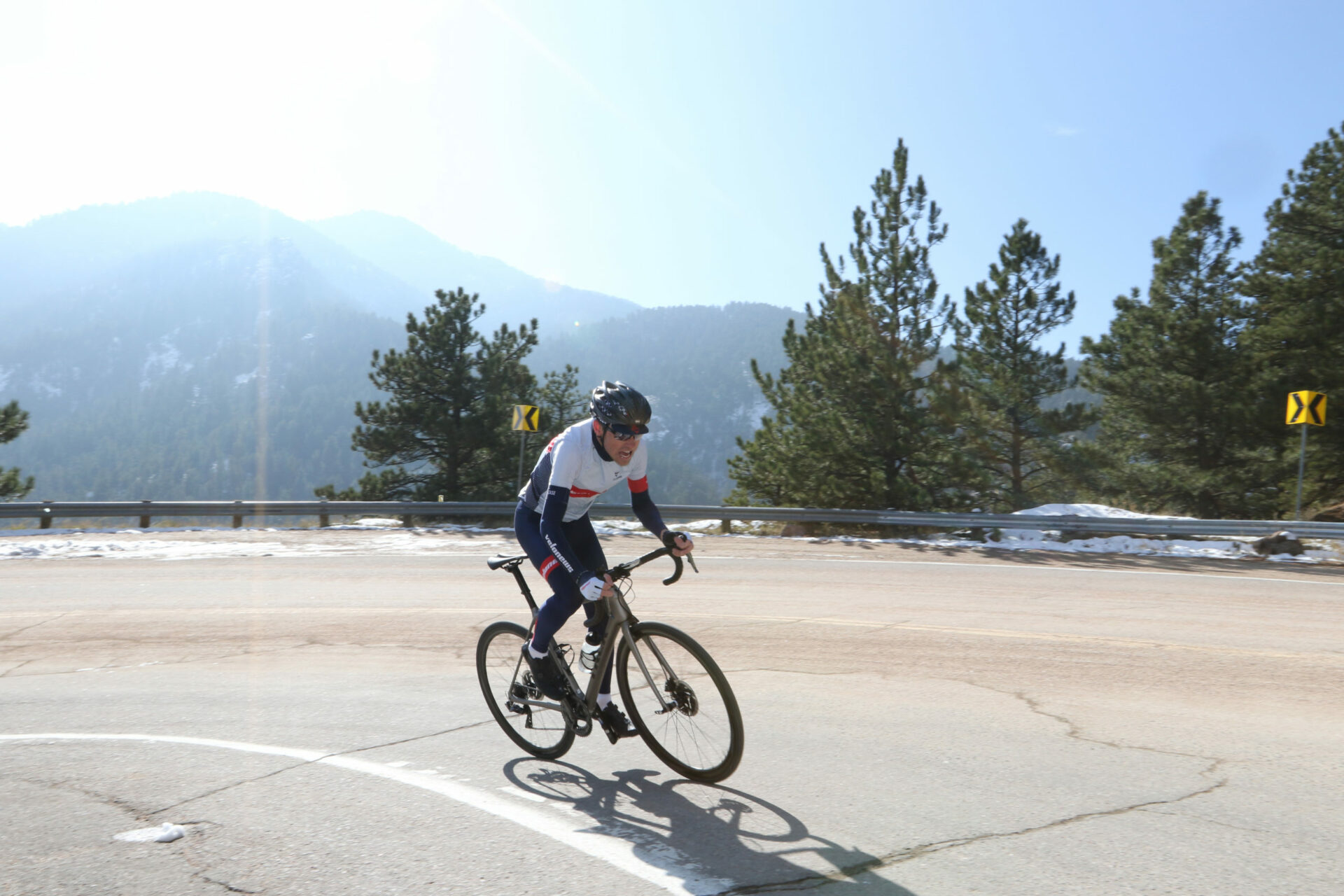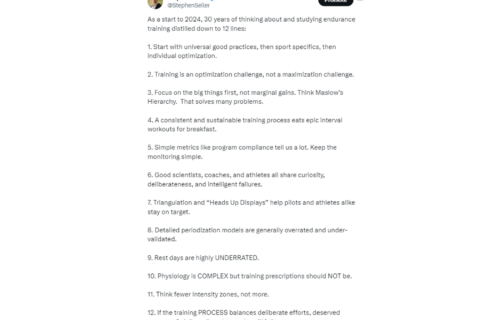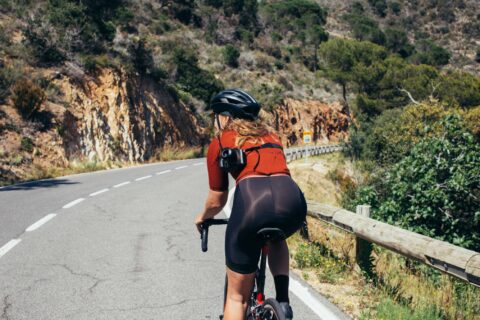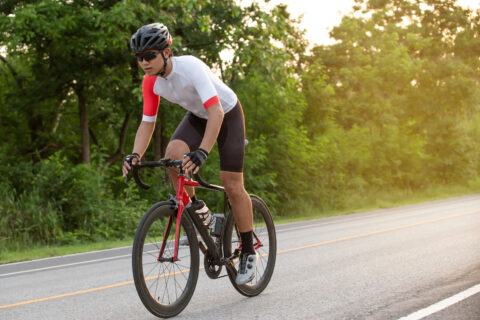It’s surprisingly common that a young, enthusiastic cyclist will come to me, excited to show off recent ride data that shows how he matched the wattage that some pro rider put out on the 30-minute finishing climb of a Tour de France stage. It’s right there in TrainingPeaks—those colored lines never lie. He’s the next Tour champion!
As a coach, I never want to stifle that enthusiasm, but every time I have the same thought: If you can ride five hours a day for two weeks and, on the last day, ride at race-pace for four hours and then repeat your 30-minute climb at that same wattage, then we can talk about your Tour potential. Otherwise, we need to understand the vast differences between the incredible numbers a rider can generate when he’s fresh compared to when he’s two weeks into a stage race.
Comparing yourself to the pros can be tempting, especially if you do a particular climb or segment on fresh legs and they’ve done if after five hours and 10,000 feet of elevation gain. Which brings to mind one of my favorite expressions in cycling (and, I believe, one of the most important): “Racing isn’t about how hard you can go for 10 minutes; it’s about how hard you can go for 10 minutes after three, four, or even five hours of racing.”
“Racing isn’t about how hard you can go for 10 minutes; it’s about how hard you can go for 10 minutes after three, four, or even five hours of racing.”
Even though it doesn’t show up on most physiology tests or Strava, our sustainability can win as many races as a good sprint. Here’s why.
The concept of cardiac drift
The power-to-weight ratio that top pros put out up a 30-minute climb at the Tour is impressive. But even more impressive is the fact that they do it after more than two weeks of racing.
Coaches often talk about a phenomenon called cardiac drift. Take, for example, a cyclist who rides a trainer at a set resistance for several hours. Her power is going to be steady, but her heart will slowly rise over the course of the ride. (This is why this phenomenon is also called decoupling.) The physiology behind cardiac drift is complex, but basically our hearts have a progressively harder time delivering blood to our leg muscles.
Because of cardiac drift, it’s important to do your long rides by heart rate, not power. A wattage that puts you in the right zone at the start of the ride can be unsustainably high by the end of a fatiguing ride.
At the same time, something else is going on. Each of our muscles is composed of many fibers. However, we rarely use all of them. When walking, for example, you may only use 30 percent of the muscle fibers in your legs. Likewise, riding at a steady, easy tempo, you may use 40 percent of your available fibers. This means that 60 percent of the fibers are staying rested until they are needed for that town line sprint or short steep climb. As we ride, fibers fatigue and weaken. They can’t produce as much power, so more and more fibers are recruited for the same effort.
Cardiac drift and increased fiber recruitment are key components of sustainability. Over the course of a long ride, your heart becomes less effective at delivering oxygen and, simultaneously, your muscles increasingly demand more. That’s why you can go from producing a stunning wattage at a given (low) heart rate to a wattage that your grandmother would mock at the same heart rate. All the while, you’re limping home four hours later.
Now, let’s put this in racing terms. Imagine that you and another rider are evenly matched in a lactate test or hill climb time trial. However, you have much better sustainability than your rival. At the start of a race, you’d both be sitting at the same heart rate using 50 percent of your fibers to stay in the field. You’d be even.
After two hours, however, your rival would start experiencing much greater drift. By the time you’re 10 minutes from the finish, your rival’s heart rate is 10 beats per minute higher and he’s using a lot more fibers. Your hidden asset just showed itself, and you’re going to win the race.
Training the drift
Studies have shown that even at extremely high power outputs, pro riders don’t experience the same rise in heart rate or oxygen consumption of amateur cyclists. Here are a few training tips to help you sustain more like a pro.
It’s all about that base
Intervals and long, slow rides are equally good at training cardiac drift. Time on the bike, especially during the winter months, makes the biggest difference. Some pros don’t consider their base period complete until they’ve minimized their drift.
Long rides
I personally believe that long rides should be 150 percent longer than your longest races to fully stress fiber sustainability. As you get closer to the season, push harder on the last hour of your long rides when the fibers are struggling.
Strength training
The debate continues whether lifting weights will make you faster on the bike. However, there is unequivocal evidence that strength training improves the resistance of muscle fibers and delays recruitment when riding. Lifting weights or doing plyometrics in the winter will help you in the third hour of your big race. Put a focus on your hip flexors and core—they fatigue first.
High cadence
Low-cadence riding recruits more fibers and fatigues them faster, especially when you’re going hard. Therefore, use low-cadence or “big gear” training rides strategically to build that sustainability. Otherwise, train at high cadences (90-100 RPM), and race high as well.
Protect your winning move
The 30-40 percent of muscle fibers that you hope to save throughout a race are ultimately the fibers that will help you win that race. Protect them! Avoid unnecessary efforts such as attacks and rely on others to cover moves in the first half of the race. Imagine if you were a race car. You don’t want to go near redline until the last few laps.
Interval training to build fiber strength
Certain types of interval work can help build stronger, more durable fibers. Just remember, these aren’t the standard interval workouts you see in training books: They aren’t designed to build your five-minute effort but, rather, to improve sustainability.
Hill sustainers
These are a great interval to include in your training as the season approaches. Find a five- to 10-minute climb. Do five to six repeats of the climb at just below your threshold heart rate. The trick is to start and finish in the same place each time, and do the same time on every interval.
Team time trials
These are great during the base phase. With two or three friends, on flat roads, do four to eight “TTT intervals” of 10 minutes each at near race pace. Each rider should limit his or her pulls to 30 seconds at a time. Not only do these build great sustainability, you also get paceline work as well.
Training races
Race smart on the weekends, race hard during the week, as the saying goes. A few times during the season, go to a weekday training race to hurt yourself. Don’t sit in and wait for the sprint. Attack! And attack again. Go until you pop or win the race. And if you get good at that, then do a set of intervals before the race. The point being, if you aren’t thumbing a ride home afterwards, you didn’t go hard enough.




